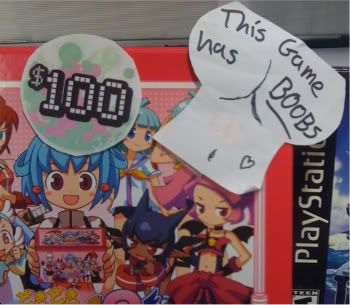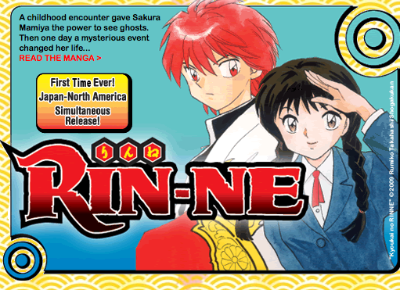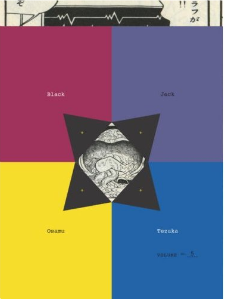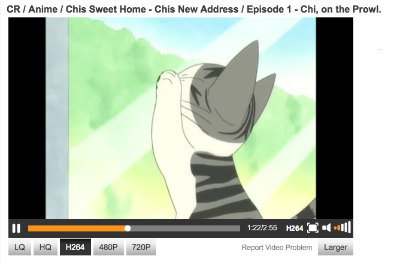June 14th, 2009
Best. Marketing. EVER!

On site today:
Read the rest of this entry »
June 14th, 2009
We won’t draw a penis on your face, we promise!

On site today:
Read the rest of this entry »
June 12th, 2009
On site / Soon to be on site:
Read the rest of this entry »
June 4th, 2009

One time when I was getting a job interview for an entry level position, my potential employer took a good look over my resume.
“So I see you’re really into this anime stuff,” he said. Since I had run a number of anime clubs in college and minored in Japanese, it was a pretty obvious theme through out my resume.
“Yes,” I told him, “I collect Japanese animation and Japanese comic books.”
I am a little worried about bringing up this subject at job interviews. How would these potential employers interpret my hobby? Would they consider it unique and interesting, or would they think it was silly and childish?
But luckily for me, he seemed to have a very favorable impression on the medium.
“You know, the best book I have ever read about business and business practices was a Japanese comic book. I couldn’t believe how educational it was. I learned so much from that one book.”
And a week later, he hired me for the job.
So when No Starch Press sent me over their current selection of The Manga Guide to… educational series, I remembered what my boss had said about learning his trade from just one comic book. Can manga actually be used in education?
After reading through three books that have been released in the series, I can confidently say that yes, manga does make a great educational tool.
Read the rest of this entry »
May 27th, 2009

Through out the past several years of my fandom, I have seen a shift in the anime market from fans getting their video on TV and DVD to the underground world of online piracy and downloading. After years of ignoring this audience shift and suffering the loss of DVD revenue because of it, the anime industry has finally embraced new technologies and began experimenting with new digital distribution systems over the internet. That is why I claim that Spring 2009 will always go down as the “Season of the Simulcast” for anime.
But anime is not the only medium experimenting this season. Within the past few weeks, the American manga industry has started claiming its own stake into the digital revolution. A new series is being released in both Japan and America at the same time, and a new manga anthology is set to be available exclusively online.
And all of these new developments have come much to the surprise of this blogger and industry analyst, because unlike anime, I have not seen the manga industry suffer at the hands of the internet.
Read the rest of this entry »
May 18th, 2009

Tezuka.
Tezuka! Tezuka! Tezuka!
You cannot be into manga without having hearing that name mentioned at least once every few months of your otaku wanderings.
Osamu Tezuka has come to be known as the grandfather of manga – the pioneer of the medium – and his works like Astro Boy and Kimba the White Lion have been staples in both American and Japanese popular culture.
Unfortunately, my problem with Tezuka is that he’s at least one generation away from me and my tastes. The man died when I was only five, and most of his work would be better known from my father’s childhood than my own. So while I recognize Tezuka and his place in manga history, I have never read or watched any of his work and mostly stuck to the comics and anime of my generation.
But Tezuka, like most fixtures of pop culture’s recent past, is making a comeback in the 21st century with many of his works finding a refresh in recent years. Niche publisher Vertical is leading the manga charge by diving deep into the Tezuka archives and releasing many of his works to the American audience. Thanks to this publisher, decades-old titles like Dororo and MW are now being seen in English for the first time ever.
At the forefront of Vertical’s Tezuka revival is Black Jack, the story of a rogue doctor who’s purpose in life is to save anyone who needs saving, despite the circumstances or option of payment. The series has seen almost universal approval from the manga community since its stateside release.
So when Vertical’s brand new marketing director Ed Chavez offered up review copies of their fifth Black Jack collection, I very eagerly requested a copy to find out what all the hype’s been about.
And wow, now I know, because reading Black Jack has changed my view and perception of the medium I thought I knew completely.
Read the rest of this entry »
May 13th, 2009

The Japanese novel To the Ends of the Earth and Sea – the story of Mongolian leader Genghis Khan – recently saw two different adaptations. The first was an epic live-action film in 2007. A co-production between Japan and Mongolia, the Genghis Khan movie won over the critics thanks to its lavish Mongolian locations and its battle scenes involving thousands of actors. The movie went on to top Asian box office charts and saw a limited theatrical run in America before being recently released on DVD and Blu-Ray by our good friends at FUNimation.
Around the same time, Japanese publisher Flex Comics created its own manga adaptation of the novel and published the single-volume release in 2008. Thanks to Flex’s partnership with DC Comics and its CMX Manga imprint, the comic has been translated into English and is now available in the US to go along with the movie.
This story explores the early life of the future leader of the Mongolian Empire back when he was only known as Temujin. He encounters Jamuqa, a boy from a rival tribe. After saving each other from the attack of wild animals, the two form a bond between them as “blood brothers.” But as the two grow older, they must battle each other for tribal dominance and the glory of being the sole leader of the Mongolian empire.
With such a story revolving around one of the greatest conquerors in human history, you would expect the comic to an epic tale of blood, pride, and victory, right?
Unfortunately, this manga adaptation of Khan fails to capture any of the awesomeness of its real-life hero… or of the movie, for that matter.
Read the rest of this entry »
May 6th, 2009

As being both an anime / manga fan and a student of Japanese language and culture, I have been exposed to quite a lot of Japanese-related events and activities around the New York area through out the years. From the various conventions, to the “Japan Day” celebration in Central Park, to the various festivals thrown by my college’s Japanese culture club, I have gotten my fair share of culture.
But I have never been to the annual Sakura Matsuri festival held every year at the Brooklyn Botanical Garden, nor was I really planning on going this year. It looked like it would be filled with the same activities I have seen day-in and day-out. Taiko Drumming, Kimono wearing, origami… I got it already.
But this year seemed to include a lot of otaku-related activities thanks to the involvement of Peter Tatara and the New York Anime Festival. Add that to the fact that a few of my friends and my favorite local bunny girl were attending, and so I ended up making the last-minute decision to go to Brooklyn last Saturday.
… and very much to my surprise, Sakura Matsuri ended up being one of the most enjoyable Japanese culture event I have ever been to.
Read the rest of this entry »
April 29th, 2009

A year ago, Japanese studio Gonzo was on the verge of financial collapse and tried to dig themselves out by experimenting with a new idea for the US market. They introduced the simulcast, a free, legal, fully-subtitled copy of their Spring 2008 series Drauga and Blassreiter. They would make each episode available on video streaming sites like Crunchyroll and Youtube within hours of it being broadcast on Japanese TV.
This was done in an effort to combat the piracy of new shows being released in Japan. Anime fans – especially those in America – had become too accustomed to the quick and easy fansubbing distribution system that came thanks to the availability of broadband internet access. By the audience using a method that was uncharted and not monetized, the industry on both sides of the Pacific began seeing a huge drop in sales as fans were less inclined to purchase DVDs.
The ad-supported simulcast strategy that Gonzo was experimenting with provided a monetized alternative to illegal fansubbing. By having a team work on subtitling an anime episode prior to its Japanese TV broadcast, the company was able to have their own version available to the audience before any pirated version could be released onto the web.
True, it didn’t fully stop piracy dead in its tracks, nothing will ever stop piracy. But the amount of lost revenue that Gonzo had now regained thanks to the simulcast encouraged them to continue with the experiment. They released the Summer 2008 series Strike Witches as a simulcast, and continue to do so with every one of their series up until this season’s Shangri-La and Saki.
Read the rest of this entry »








